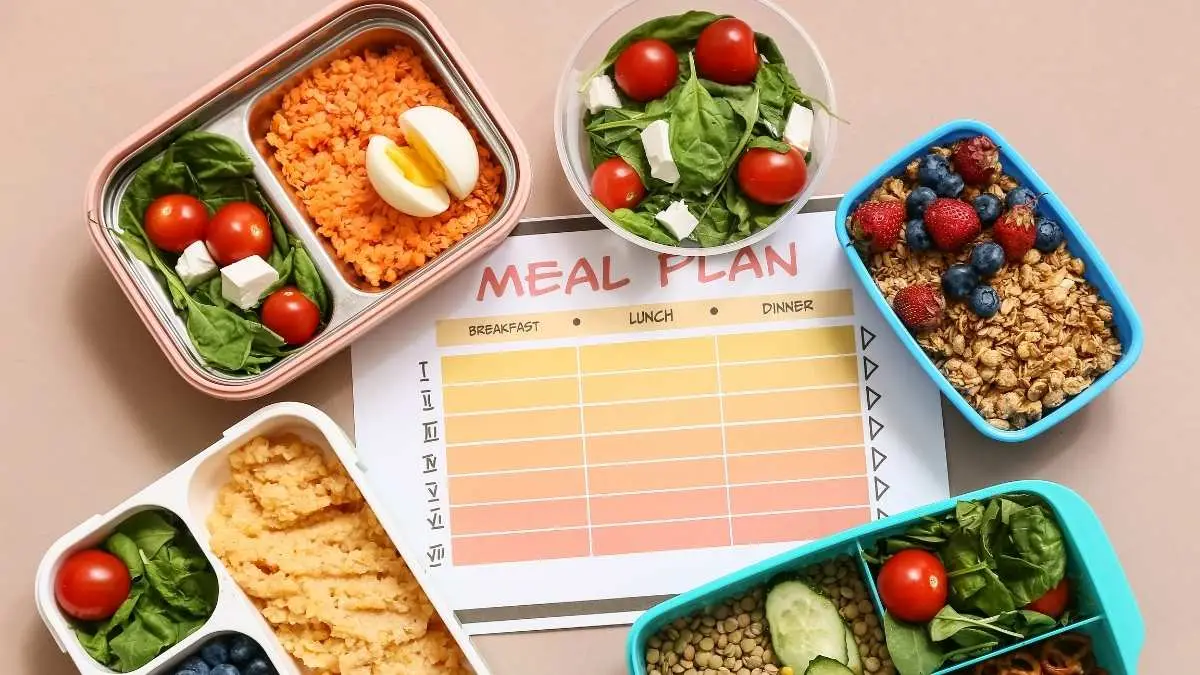You follow the rules. You eat the low-fat yogurt, choose chicken over steak, and exercise regularly. So why is your doctor still worried about your heart? This frustration comes from a story we’ve all been told for over 60 years: fat clogs your arteries.
This simple idea is why millions are confused when their “healthy” lifestyle doesn’t fix their cholesterol numbers.
This report takes apart that old story. It reveals the true drivers of heart disease are chronic inflammation and metabolic problems—not the cholesterol in your food.
Here, you will get a clear, actionable plan to protect your heart based on new, better science for 2025 and beyond. It’s time to learn what cardiologists are finally starting to understand.
Why We Got It Wrong About Fat and Cholesterol

The rules we follow for heart-healthy eating were built on a weak foundation. To see where medicine is going, you first need to see the past mistakes that created the confusion about fat, cholesterol, and sugar.
How One Study Created a Myth
In the 1950s, a new health crisis appeared. Heart disease was rare in the early 1900s. By the 1950s, it was the top killer. People were scared and wanted answers.
A physiologist named Ancel Keys had an idea: the diet-heart hypothesis. His point was simple. The more saturated fat people ate, the more likely they were to die from heart disease.
The proof for this idea came from the Seven Countries Study, which started in 1957. It followed almost 13,000 men in seven countries. The results seemed to prove Keys’ theory. The study became famous and shaped dietary rules for many years.
But the study had big problems:
- He picked the countries that fit his idea. Keys had data from 22 countries. He only used the seven that supported his theory. He left out countries like France, where people ate lots of saturated fat but had low rates of heart disease. This went against his idea.
- The methods were flawed. The diet information came from a very small group of men, only about 30 in each place. Also, the methods to check their diets were not consistent. For example, the sample from Crete was taken during Lent.
During Lent, people fast from animal products. This made their saturated fat intake look much lower than it really was. This major issue was ignored. - He missed a bigger problem. Later, when others looked at Keys’ data, they found something else. Eating “sweets” like sugar and pastries was more strongly linked to heart disease deaths than saturated fat was.
The diet-heart idea won, not because the science was solid, but because it gave people a simple enemy when they were afraid. Keys was a good talker. He convinced groups like the American Heart Association (AHA) to back his low-fat advice in 1961. This turned a weak idea into a public health rule for decades.
The Saturated Fat Scapegoat: Are Steak and Butter Really the Problem?
Because of the diet-heart idea, the official advice for generations has been to limit saturated fat. But a lot of new, high-quality science is forcing us to rethink this.
Many big studies now show no strong link between eating more saturated fat and heart disease or death. The big PURE study even found that eating more fat, including saturated fat, was linked to a lower risk of death.
This leads to a new view: the food matters more than the fat itself. The saturated fat in whole foods like full-fat yogurt, cheese, and unprocessed meat does not seem to raise heart disease risk. But saturated fat in ultra-processed foods, along with sugar and refined flour, might be bad for you. The focus is now on food quality, not just one nutrient.
Also, what do you eat instead of saturated fat? This is a key question. Research shows that replacing saturated fat with healthy unsaturated fats (like in olive oil) is good. But replacing it with refined carbs and sugars increases your risk of heart disease.
This is exactly what happened during the low-fat craze. Food companies took fat out of products and added sugar to make them taste good. People thought “low-fat” meant healthy and ate a lot of these foods.
This shift from fat to refined carbs helped cause the obesity and type 2 diabetes problems we see today. The solution became a bigger problem.
The Real Villain: Sugar and Refined Carbs
While fat was blamed, a more dangerous cause was in plain sight. A lot of evidence now points to added sugars and refined carbs as a main cause of heart disease. As cardiologist Dr. Stephen Sinatra says, “sugar is a far greater danger to your heart than fat ever was.”
Sugar harms your heart in several ways:
- It causes insulin resistance. Your body’s cells stop responding to the hormone insulin. This leads to high blood sugar.
- It causes chronic inflammation. This is like a slow-burning fire inside your arteries. It’s now seen as the root of clogged arteries.
- It messes up your blood fats. It raises triglycerides and helps form small, dense LDL particles. These are the most dangerous type of cholesterol particle.
Studies show a clear link. The more added sugar you eat, the higher your risk of dying from heart disease.
The evidence is so strong that the American Heart Association now has strict limits for kids. They say children should have no more than 25 grams (about 6 teaspoons) of added sugar a day.
This mistake goes back to the 1960s. A British scientist named John Yudkin argued that sugar, not fat, was the real problem. But Ancel Keys had more influence, and Yudkin’s ideas were pushed aside. This set nutrition science on the wrong path for 50 years.
| Feature | The Outdated “Lipid Hypothesis” | The Modern “Inflammation/Metabolic Model” (2025) |
| Primary Villain | Dietary Saturated Fat & Cholesterol | Chronic Inflammation & Insulin Resistance |
| Primary Fuel Source | Red Meat, Eggs, Butter | Added Sugar, Refined Carbohydrates, Processed Foods |
| Key Blood Marker | High LDL-C (“Bad Cholesterol”) | High hs-CRP, High LDL-P, High Triglyceride/HDL Ratio |
| Underlying Mechanism | Mechanical “Plumbing” Issue (Clogged Pipes) | Biological “Fire” (Inflammatory Response in Artery Wall) |
| Primary Solution | Low-Fat Diet, Statins to lower LDL-C | Anti-inflammatory Diet, Lifestyle changes, Targeted Supplementation |
What Really Causes a Heart Attack

The old diet-heart idea is falling apart. This has led to a better, more accurate view of clogged arteries. The modern view of heart disease is not about plumbing. It’s about biology.
It focuses on the fire inside the artery wall and the types of particles that carry cholesterol. It shows that the standard cholesterol numbers are often a poor clue to your real risk.
The Fire Within: Inflammation as the Root Cause
The biggest change in cardiology is seeing inflammation as the main cause of clogged arteries. In this view, high cholesterol doesn’t cause plaque. It’s just part of an inflammatory response.
Think of it like this: firefighters are always at a fire, but they didn’t start it. The fire is the chronic, low-grade inflammation in your artery lining.
The key blood test for this is high-sensitivity C-reactive protein (hs-CRP). Many studies show that hs-CRP predicts heart attacks and strokes better than LDL cholesterol. A person with low LDL but high hs-CRP can be at a much higher risk than someone with high LDL but low hs-CRP.
This new view has reached the top levels of cardiology. In a 2025 statement, the American College of Cardiology (ACC) said the link between inflammation and heart disease is “compelling and clinically actionable.”
They now recommend hs-CRP screening for all patients. This is a huge shift. It makes inflammation a main target for doctors. The FDA also recently approved a drug, colchicine, that specifically targets inflammation in heart disease. This proves that treating the “fire” is now a key strategy.
Why Your “Bad Cholesterol” Number Is a Bad Clue
For years, doctors and patients focused on the LDL-C number. This is the estimated weight of cholesterol in your LDL particles. But this number is often a bad clue for your real risk. The new science shows that the type of LDL particles is much more important.
The most important number is the LDL Particle Number (LDL-P). This is the actual count of LDL particles in your blood. Your risk of clogged arteries is more closely tied to the number of particles than the cholesterol they carry.
Think of traffic on a highway. Is the danger the total weight of cargo in a few big trucks, or a swarm of thousands of small motorbikes? LDL-C measures the cargo. LDL-P counts the vehicles. It’s the high number of particles that raises the chance they will get into the artery wall and start the fire that leads to plaque.
Here’s the problem: LDL-C and LDL-P can be discordant. A person can have a “normal” LDL-C number but a dangerously high number of LDL particles. This is common in people with insulin resistance, which is fueled by high-sugar diets.
These people are at high risk for a heart attack, but their standard cholesterol test gives them a false sense of safety. Big studies have confirmed that when these numbers don’t match, your risk follows the particle number, not the cholesterol level.
Also, particle size matters. LDL particles can be large and fluffy (less harmful) or small and dense (very harmful). These small, dense particles can easily get into the artery wall and get damaged. A diet high in refined carbs and sugar pushes your body to make more of these dangerous small particles.
The Seed Oil Debate: Are “Heart-Healthy” Vegetable Oils Fueling Inflammation?
One of the hottest topics in nutrition is industrial seed oils (like soybean, corn, and canola oil). Health groups have long said to replace saturated fats with these oils. They argue that these oils help lower LDL cholesterol.
But a growing number of scientists are worried about how much of these oils we now eat. The main concern is their high amount of an omega-6 fat called linoleic acid.
While your body needs some omega-6, the typical Western diet has a ratio of omega-6 to omega-3 of 20-to-1 or higher. Our ancestors ate a ratio closer to 1-to-1.
The argument against these oils is that they cause inflammation:
- Too much linoleic acid can turn into other compounds that promote inflammation.
- More importantly, the unstable fats in LDL particles make them easy to damage or “oxidize.” Some researchers now think that it is this oxidized LDL, not normal LDL, that starts the process of clogging arteries.
The science is still debated. A 2024 analysis found that a higher omega-6 to omega-3 ratio was linked to a 31% higher risk of death from heart disease.
Also, a re-analysis of an old study found that replacing saturated fat with a high-linoleic-acid margarine increased deaths, even though it lowered cholesterol.
On the other hand, many studies show that higher levels of linoleic acid in the blood are linked to a lower risk of heart disease. Supporters say the LDL-lowering effect of these oils is what matters most.
A good approach for 2025 is to look at how you consume these oils. They are the main fats used in ultra-processed foods and for deep-frying in restaurants. Heating these oils over and over can create harmful products.
So, a smart plan is to cut way back on processed and fried foods. Instead, get your fats from whole foods. Use stable fats like extra virgin olive oil and avocado oil for cooking at home. This will naturally help fix your omega-6 to omega-3 balance.
The Truth About Statins

Statins are one of the most prescribed drugs ever. They are a multi-billion dollar industry built on the promise of preventing heart disease by lowering LDL cholesterol. They are very good at lowering LDL-C.
But there is a big debate about who really benefits from them and if the benefits are worth the risks for many people who take them.
Who Really Needs Statins?
The evidence for statins is strongest for people who have already had a heart attack or stroke. In this high-risk group, statins have been shown to reduce the risk of another event. Even strong critics of the cholesterol idea agree they are useful for this group. They think the benefit comes from the drug’s anti-inflammatory effects, not from lowering cholesterol.
The real debate is about giving statins to healthy people with no history of heart disease, just based on high cholesterol. In this low-risk group, the benefits are much smaller. The issue is often hidden by how risk is presented.
A study might say a drug gives a “30% reduction in heart attack risk.” That sounds great. But if the risk for the group was only 3% over ten years, a 30% reduction means the new risk is 2.1%. The actual risk reduction is less than 1%.
This means over 100 people would need to take the drug for a decade to prevent just one heart attack. This important difference is rarely explained well to patients.
This is made more complex by a strange problem. While many low-risk people may be getting drugs they don’t need, a 2025 study found a huge “treatment gap.”
It showed that only 23% of adults who should be on cholesterol drugs according to guidelines were actually taking them. This shows a big disconnect.
At the same time, the side effects of statins are real. The most common are muscle pain and weakness, which may affect 5% to 15% of users. Statins can also slightly raise blood sugar levels. This can push some people into a type 2 diabetes diagnosis.
The Nutrient Statins Steal From Your Body
One of the biggest but least-talked-about side effects of statins is their effect on a key nutrient: Coenzyme Q10 (CoQ10). Statins work by blocking an enzyme in the liver to stop cholesterol production. But this same pathway is also used by the body to make CoQ10.
CoQ10 is vital for life. It is key for how your cells make energy. The heart uses the most energy of any organ and has the most CoQ10. CoQ10 is also a strong antioxidant that protects your cells from damage.
By blocking CoQ10 production, statins can drain the body of this key nutrient. This is thought to be a main cause of the drug’s side effects, especially muscle pain, weakness, and fatigue.
Since the heart needs so much energy, draining its fuel source is a big concern. For this reason, many cardiologists argue that anyone taking a statin should also take at least 200 mg of CoQ10 every day to help with these effects.
Other Options Besides Statins
For people at very high risk, like those with a genetic condition called Familial Hypercholesterolemia (FH), or for those who can’t take statins, medicine is often needed. Luckily, there are more options now.
- Ezetimibe (Zetia): This pill works by blocking cholesterol absorption in your gut. It’s often used with a statin or alone for people who can’t take statins.
- PCSK9 Inhibitors (Repatha, Praluent): These are powerful, injectable drugs that clear a lot of LDL from the blood. They are a huge help for patients with severe genetic high cholesterol.
- Bempedoic Acid (Nexlizet): This is a newer pill that also lowers LDL-C. It’s for patients who can’t take statins or need more help.
The creation of these powerful drugs shows a bias in how medicine treats heart disease. The focus is still on using drugs to lower one number (LDL-C) instead of fixing the root causes—inflammation and metabolic problems.
While these drugs can save lives for a small group of high-risk patients, the best “alternatives” for most people are not other pills. The most powerful alternatives are lifestyle changes that can fix the real problem. This might mean you don’t need lifelong medication at all.
Your Action Plan for a Healthy Heart

Knowing the flaws of the old ideas is the first step. The next, more important step is to act. This section gives you a clear, science-backed plan to lower inflammation, improve your metabolic health, and build a strong heart for 2025 and beyond.
How to Eat to Fight Inflammation
The goal of a heart-healthy diet is not to be “low-fat.” It is to be “anti-inflammatory” and “metabolically healthy.” This means shifting from processed foods to whole, nutrient-rich foods. These ideas are the base of diets like the Mediterranean Diet, which are linked to better heart health.
Foods to Eat (The “YES” List):
- Healthy Fats: Make these the base of your diet. Focus on extra virgin olive oil, avocados, nuts (walnuts, almonds), and seeds (chia, flax).
- High-Quality Protein & Omega-3s: Fatty fish like salmon, mackerel, and sardines are key for their anti-inflammatory omega-3 fats. Pasture-raised meats and eggs are also good sources of protein.
- Fiber and Phytonutrients: Eat a lot of colorful, non-starchy vegetables like leafy greens and broccoli. Also include low-sugar fruits like berries.
- Polyphenol-Rich Foods: These plant compounds are great for fighting inflammation. Good sources are green tea, coffee, dark chocolate (85% cacao or higher), and spices like turmeric and ginger.
Foods to Avoid (The “NO” List):
- Added Sugars and Refined Carbs: This is the most important step. Cut out sugary drinks, fruit juices, cereals, white bread, and pasta. These are the main foods that fuel inflammation.
- Industrial Seed Oils: Cut back on foods cooked in soybean, corn, or canola oil. This means avoiding most processed, packaged, and fast foods.
- Ultra-Processed Foods: A simple rule is to avoid foods with long ingredient lists that include chemicals you don’t recognize.
Helpful Supplements for Your Heart
While food comes first, some supplements can give powerful support for your heart.
The “Big Two” – Basic Support:
- Coenzyme Q10 (CoQ10): CoQ10 is key for energy in your heart cells. Your levels go down as you get older and are drained by statin drugs. It’s a good idea for most adults over 40 and is a must for anyone on a statin.
- Magnesium: This mineral helps relax your blood vessels, which lowers blood pressure. It also supports a steady heartbeat and helps your body use insulin. Many people don’t get enough magnesium.
High-Impact Additions:
- Omega-3 Fatty Acids (from Fish Oil): If you don’t eat fatty fish often, a fish oil supplement is a good idea. It fights inflammation directly.
- Soluble Fiber: Supplements like psyllium husk can help lower LDL levels.
More Than Food: Stress, Sleep, and Exercise
Diet is a big piece of heart health, but it’s not the only one. You also need to manage stress, sleep, and movement.
- Manage Stress: Long-term stress is a powerful cause of heart disease. It releases hormones that can damage your arteries and raise blood pressure. You need to manage it. Good ways to do this include:
- Daily meditation (5-10 minutes is enough).
- Deep breathing exercises.
- Spending time in nature and with friends.
- Sleep: Aim for 7 to 9 hours of good sleep each night. This is when your body repairs itself and controls stress hormones. Not getting enough sleep is a major risk factor for heart disease.
- Smart Exercise: The old advice to just “do more cardio” is not enough. A good exercise plan includes:
- Zone 2 Aerobic Exercise: This is low-to-moderate activity like brisk walking for 150-300 minutes a week.
- Resistance Training: Lifting weights or doing bodyweight exercises builds muscle, which helps your body handle sugar better.
- High-Intensity Interval Training (HIIT): Short bursts of hard effort can give you big heart benefits in less time.
The Best Oils for Your Kitchen
The cooking oil aisle can be confusing. A simple way to choose is based on the oil’s smoke point. This is the temperature where it starts to break down and create harmful stuff.
- High-Heat Cooking (Searing, Roasting):
- Best Choice: Avocado Oil. It has a very high smoke point and is made of stable fats.
- Medium-Heat Cooking (Sautéing, Baking):
- Best Choice: Extra Virgin Olive Oil (EVOO). It’s stable enough for most home cooking. Its plant compounds add extra protection.
- Other Options: Coconut oil and ghee (clarified butter) are also stable and can be used sometimes.
- No Heat (Dressings, Drizzling):
- Best Choices: Extra Virgin Olive Oil, Flaxseed Oil, Walnut Oil. These oils have delicate fats that are damaged by heat. Use them cold to get all their benefits.
- Oils to Avoid for Cooking: Industrial seed oils (corn, soybean, canola) are not stable when heated. They can create harmful compounds, especially when used over and over like in deep fryers.
| Action | Why It Works | Target / How-To |
| Eat Fatty Fish | Provides anti-inflammatory Omega-3s (EPA/DHA) to counteract Omega-6. | 2-3 servings/week (Salmon, Mackerel, Sardines). |
| Use EVOO Liberally | Rich in monounsaturated fats and anti-inflammatory polyphenols. | 2-4 tablespoons/day. Use for dressings and medium-heat cooking. |
| Eliminate Sugar/Refined Grains | Drastically reduces the primary fuel for inflammation and insulin resistance. | Avoid sugary drinks, white bread, pasta, cereals. Read labels for added sugar. |
| Supplement with CoQ10 | Fuels heart cell energy production; critical if on a statin. | 100-200mg daily (Ubiquinol form is often preferred). |
| Supplement with Magnesium | “Nature’s calcium channel blocker”; lowers blood pressure, improves insulin sensitivity. | 200-400mg daily (Glycinate or Citrate forms are well-absorbed). |
| Prioritize 7-9 Hours of Sleep | Regulates stress hormones (cortisol) and controls inflammatory cytokines. | Create a consistent sleep schedule and optimize your sleep environment. |
| Practice Daily Stress Reduction | Lowers cortisol and sympathetic nervous system activity, reducing arterial stress. | 5-10 minutes of daily meditation, deep breathing, or a walk in nature. |
Take Control of Your Heart Health

The time of just accepting a high cholesterol number and a life of statins is over. The science has changed. The evidence is clear that the main causes of heart disease are not the whole-food fats we were told to fear.
The real causes are chronic inflammation and metabolic problems, mostly fueled by a modern diet of sugar, refined carbs, and processed foods. The simple “clogged pipes” story has been replaced by the idea of an inflammatory fire inside your arteries.
This new view gives you power. It puts control back in your hands. By focusing on putting out the fire of inflammation and fixing your metabolic health, you can greatly reduce your risk of heart disease.
The last step is to talk to your doctor with this new knowledge. You need to be an informed partner in your own health. Here is a guide for that conversation:
- “Doctor, I know my LDL-C is [number]. But I’ve read that inflammation is a key driver of risk. Can we please test my high-sensitivity C-reactive protein (hs-CRP) to check for inflammation?”
- “I’m also worried about my metabolic health. Besides glucose, can we check my fasting insulin and my Triglyceride-to-HDL ratio?”
- “Since studies show LDL particle number can be a better risk predictor than LDL-C, can we order an LDL particle number (LDL-P) or an ApoB test?”
- “If we are thinking about a statin, can we talk about the actual risk reduction for someone like me? And if I do start a statin, I would like to take Coenzyme Q10 to support my heart’s energy.”
When you ask these questions, you are not questioning your doctor’s knowledge. You are asking for a more complete and modern look at your health.
The information in this report gives you the tools to move past the old cholesterol myth. You can become the CEO of your own heart health.


